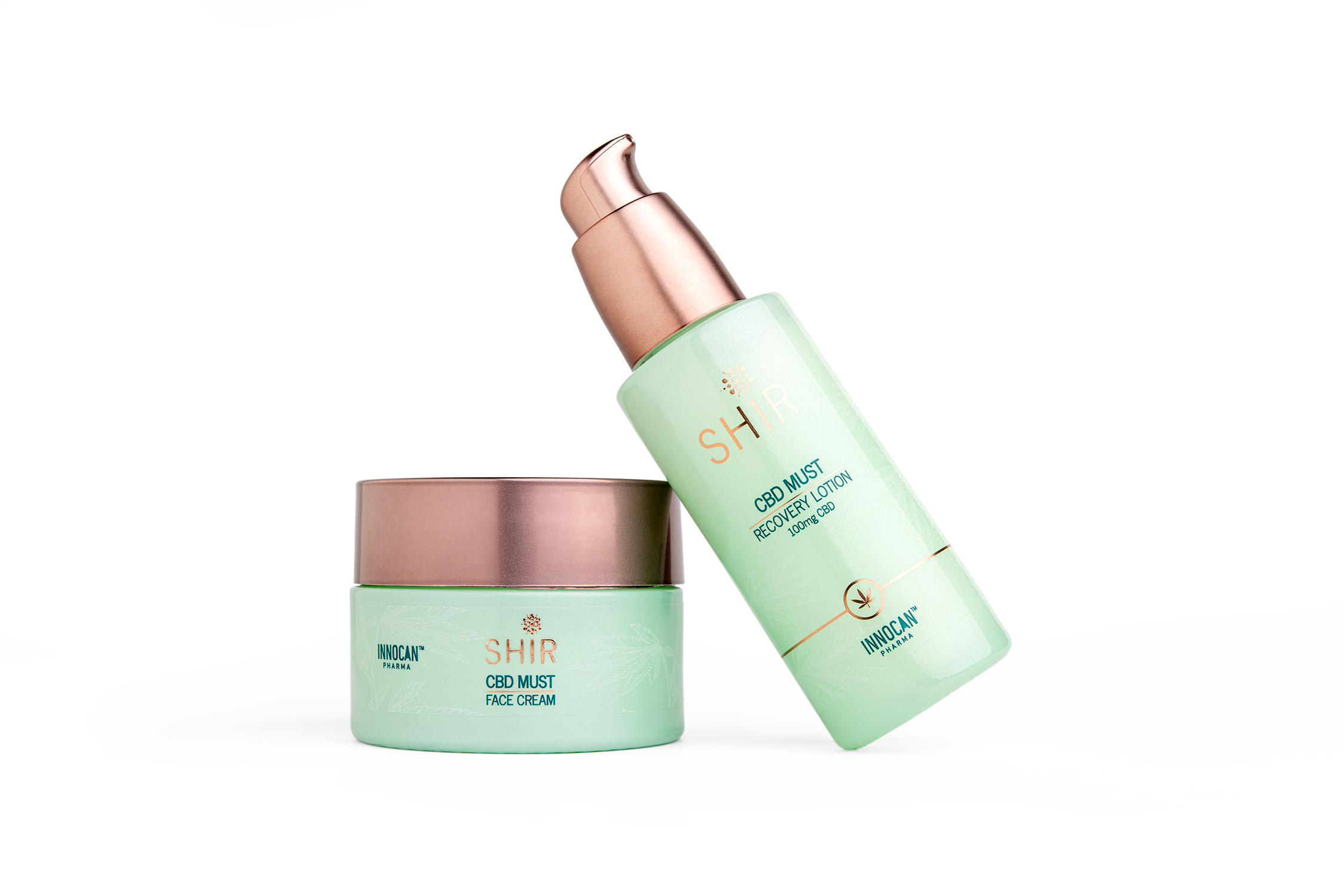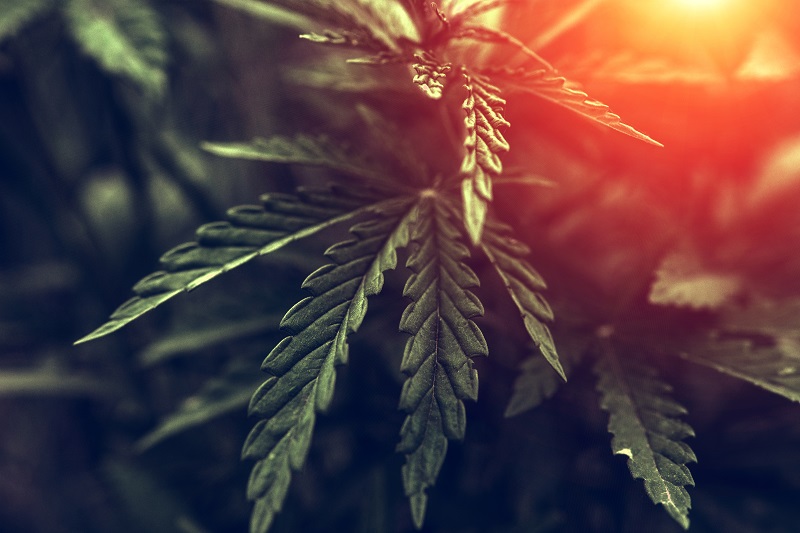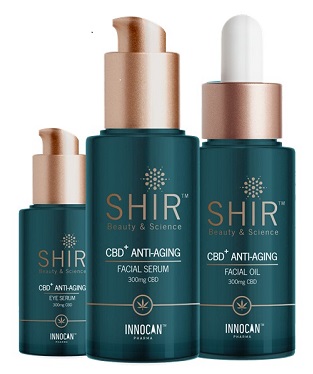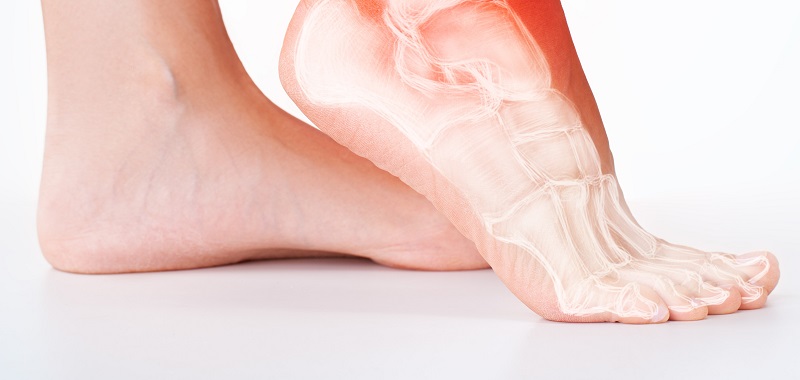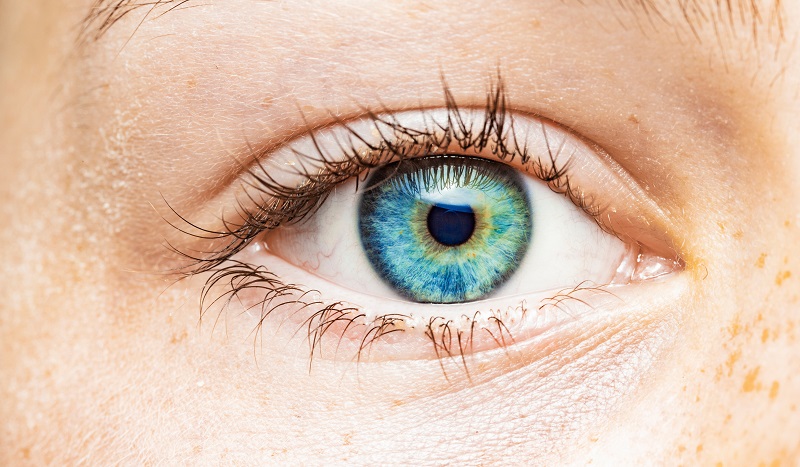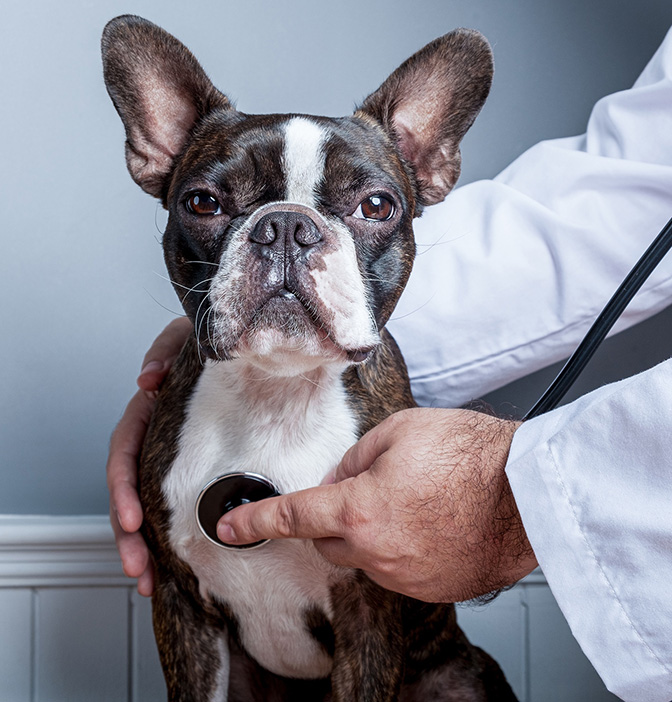Why CBD is Prescribed for Anxiety

Cannabis species of plants have been widely cultivated around the world for religious, spiritual, medicinal, and recreational purposes. CBD-integrated topical therapeutic products, such as pain relief sprays, powders, and CBD oil, are valued for their analgesic (pain relief), anti-anxiety, antispasmodic, and anti-inflammatory effects.
Researchers are focusing on novel therapeutic agents that are safe, non-toxic, and non-addictive to treat many chronic health conditions. CBD is one such compound that has sparked the interest of biotech firms, scientists, and wellness professionals. As a popular ingredient found in many health, beauty, and wellness products, CBD is incorporated in topical products such as pain relief spray, eye serum, facial cream, and sleeping mask. CBD offers a huge potential in treating pain, inflammation, anxiety, epilepsy, irritable bowel syndrome, and a range of skin conditions.
The origins of CBD
CBD stands for cannabidiol and is one of the derivatives of a species of plant that belongs to the family of Cannabaceae. This is a group of flowering plants that belong to the order of Rosales. Plants that belong to this family are either climbing or erect plants that have dry, single-seeded fruits and petalless flowers.
The Cannabacea family comprises eleven genera (plural for genus) that include Cannabis (marijuana, hemp), Celtis (hackberries), and Humulus (hops). These eleven genera together contain close to 170 species. Celtis is the largest or all genera and has about a hundred different species. Out of these, two of the economically important species are hop and hemp (Cannabis).
The genus of Cannabis contains, according to some classification, a single plant species known as Sativa, and this plant is named Cannabis Sativa.
Cannabis Sativa is a herbaceous plant that is stout and aromatic. Its origins can be traced to Central Asia, although the plant is widely cultivated across the world currently. There are many varieties of Cannabis sativa. A tall, canelike species of Cannabis is grown exclusively for its fiber, and a shorter version is rich in tetrahydrocannabinol (THC). THC is the psychoactive substance that produces the feeling of being ‘high.’ According to the U.S. FDA (Food and Drug Administration), Cannabis Sativa plants that have more than 0.3% of THC are called marijuana plants.
The shorter Cannabis Sativa plants are grown for medicinal purposes and are rich in CBD and low in THC. These plants are called hemp plants and have less than 0.3% THC. Certain other varieties are grown only for the fiber and seeds, out of which hemp oil is derived.
The earliest recorded use of cannabis, according to archeological evidence, is in the third millennium BC. Historical evidence indicates cannabis was in use even before this period.
In the fourteenth century, the addictive properties of marijuana or Cannabis became widely known, with many regions restricting its use. With the discovery of CBD and its medicinal properties, many countries are relaxing the rules for medicinal Cannabis use while prompting clinical research on the therapeutic potential of CBD.
Cannabinoids and CBD: What is the link?
The Cannabis plant contains more than 500 different chemical compounds, out of which about 66 have been identified to be ‘Cannabinoids.’ These refer to a group of structurally similar compounds that are exclusive to hemp plants. Out of these, Cannabidiol or CBD has immense potential to treat various health conditions.
Delta-9-tetrahydrocannabinol or THC is one of the well-known cannabinoids present in the Cannabis Sativa plant because of its psychogenic effects.
Apart from THC, the other cannabinoids in Cannabis Sativa include:
- Cannabidiols (CBD)
- Cannabigerols (CBG)
- Cannabichromenes (CBC)
- Cannabinodiol (CBDL)
- Cannabinol (CBN)
- Other cannabinoids (cannabielsoin (CBE), cannabicyclol or CBL)
CBD is extracted from the Cannabis Sativa plant using either traditional solvent extraction or high-tech methods such as CO2 extraction. While the extraction is in the form of a powder, it is added to carrier oils such as olive, coconut, almond, and other aromatic oils to make topical products such as pain relief spray and recovery lotion.
CBD topical products are emerging as a safe way to treat anxiety, pain, inflammation, skin dryness, acne, and wrinkles, among others. Unlike THC, CBD has no psychoactive effect and, in fact, blocks the action of THC.
Anti-anxiety effects of CBD
Anxiety and fear are adaptive responses that help in coping with a range of stressors. While some anxiety is unavoidable, persistent and/or excessive anxiety can impact the quality of life and lead to disability. Many neuropsychiatric disorders have anxiety as a key symptom, including panic disorder, generalized anxiety disorder (GAD), social anxiety disorder, depression, and PTSD.
These disorders that have anxiety as the key symptom are also accompanied by difficulties with relationships, lowered sense of self-esteem and well-being, higher rates of unemployment, and increased suicide risk.
Clinical studies have found that CBD can be effective in treating multiple neuropsychiatric disorders. A systematic review of preclinical and clinical studies of CBD found that there was strong evidence for CBD’s therapeutic potential in treating panic disorder, generalized anxiety disorder, social anxiety disorder, post-traumatic stress disorder (PTSD), and obsessive-compulsive disorder.
How CBD regulates anxiety
CBD has been discovered to have a broad-spectrum pharmacological profile where it interacts with many receptors that regulate anxiety and fear-related behaviors. The most important receptors that CBD interacts with are the cannabinoid receptor type 1 (CB1), the serotonin receptor, TRP (transient receptor potential), and vanilloid type 1 receptor.
Scientists discovered the “endocannabinoids” (eCBs), cannabinoid receptors, and the ECS (endocannabinoid system) in the 1980s. Two types of eCBs were considered to be of clinical significance, namely AEA or anandamide and 2-arachidonoylglycerol.
Cannabinoids bind to cannabinoid receptors (CB) that are components of the endocannabinoid system (ECS). The endocannabinoids in the ECS system are structurally and functionally similar to the cannabinoids present in the Cannabis Sativa plant. While there are two cannabinoid receptors known as CB1 and CB2 receptors, CB1 is of relevance to neuropsychiatric disorders as this receptor is found in large amounts in the brain.
The CB1 receptor is mainly found in brain cells, while eCBs are derivatives of fatty acids that are produced in the body on demand. Endocannabinoids are a type of neurotransmitters that are involved in transmitting pain, pleasure, fear, and anxiety sensations to the brain cells.
The eCB system (ECS) regulates many physiological functions in the human body, ranging from energy metabolism, immune function, digestion to sleep. The eCB system also plays key roles in regulating emotional behavior.
In animal models, it has been shown that CB1 receptor activation results in anti-anxiety effects. Many conditions can impair the functioning of the eCB system, such as chronic stress, fear, or illness.
A clinical review found that there was convincing evidence to support the use of CBD for treating anxiety disorders. CBD is very effective in reducing experimentally induced fear and anxiety. In a study that involved a public speaking test for people suffering from anxiety disorder, researchers found CBD reduced anxiety related to public speaking. This effect was comparable to the results obtained from standard anti-anxiety medications but without the negative side effects.
CBD was also found to reduce anxiety related to undergoing SPECT imaging procedure (single-photon emission computed tomography), which is a type of CT diagnostic procedure.
CBD enhanced the elimination of fear memories in volunteers who were healthy.
A 2019 retrospective study reviewed the efficacy of CBD in treating anxiety in adults diagnosed with the condition. The study documented sleep patterns and anxiety levels in 103 adult patients. The researchers found strong evidence that CBD has a calming effect on the CNS (central nervous system).
CBD administration helped reduce anxiety scores for 79.2% of patients in the first month. Anxiety scores remained lower throughout the study duration. The study also found that sleep scores improved for 66.7% of patients with CBD use.
While only two patients stopped taking CBD in the first month because of fatigue, the rest of the participants reported no side effects with CBD use.
Cannabidiol was well-tolerated, and three patients reported mild sedation or sleepiness initially, which resolved in the following weeks. Researchers found that the CBD treatment was well-accepted on the whole as judged from the responses from patients as well as clinicians. Anxiety scores rapidly decreased in this study, and this reduction was sustained throughout the study period. According to researchers, these results are aligned and consistent with previous and existing clinical and preclinical data on CBD.
The doses of CBD used were 25 mg per day to 175 mg per day in this study. These doses were effective in achieving anti-anxiety effects, although lower than the doses described in clinical literature, between 300 mg a day to 600 mg a day, were used.
Most topical CBD products such as pain relief spray, CBD oil, facial serum, sleeping mask, eye serum have anywhere between 100 milligrams to 300 milligrams of CBD per unit.
Anxiety and depression tend to affect many aspects of life, including productivity, social life, and overall health. Cannabidiol, being a non-psychotomimetic component of Cannabis Sativa, has immense psychiatric potential. Animal studies have also shown that CBD has the potential to be used as an antidepressant and anti-anxiety drug. A review of clinical studies on CBD’s anxiolytic and antidepressant effects in animal models concluded that CBD exerted both antidepressant and anti-anxiety effects. While the researchers found that CBD did not activate CB1 and CB2 receptors, in many studies they reviewed, CBD had a good interaction with 5-HT1A neuro-receptor.
Other studies have also demonstrated that CBD exerts powerful effects to reduce panic and anxiety. Panic disorder is a psychiatric condition that can lead to disability and affects 5% of the population globally. Pharmacological approaches to treat panic disorder involve the use of long-term medications that belong to the class of SSRIs or selective serotonin reuptake inhibitors. However, these drugs have unpleasant side effects, and drug interactions raise the risk of patients discontinuing treatment that leads to a relapse of panic disorder symptoms.
Cannabidiol, owing to its potent anti-anxiety properties, has been suggested as a safer and effective alternative to treat panic and anxiety disorders. Zuardi et al demonstrated that a single 300-milligram dose of CBD decreased anxiety in healthy volunteers who were required to take up public speaking. Bergamaschi et al., in another study, showed the administration of 600 milligrams of CBD reduced social anxiety while increasing alertness in patients who had social anxiety disorder (SAD). These patients typically also experience higher levels of discomfort, higher anxiety, and cognitive impairment as compared to healthy controls during speech performance.
Taken together, clinical evidence is strongly in favor of the use of CBD in treating panic and anxiety disorders that have been demonstrated in both human and laboratory animal model studies.
While CBD exhibits anti-anxiety effects, it does not exert psychoactive effects, which makes it a well-tolerated and safe therapeutic agent. The compound also does not lead to dependence or withdrawal/abstinence symptoms. It has none of the side effects of standard pharmacological anti-anxiety medications, making it a suitable substitute for antidepressants and benzodiazepines in patients suffering from panic disorder and anxiety disorders.
What type of CBD-integrated products should you use for anxiety?
Commercially, a host of CBD-integrated topical products are available that include pain relief sprays, pain relief roll-on, sleeping mask, body oils, and gels.
If you are suffering from panic or anxiety disorder, the first step is to consult your doctor for an accurate diagnosis and treatment plan. If you have been prescribed medications, it is important also to discuss with your doctor before deciding to use CBD.
CBD has been demonstrated in many studies to be non-addictive, non-toxic, safe, and hypoallergenic.
Many studies have used between 25 milligrams to 300 milligrams of CBD. Evaluate the CBD product to see the amount of this active ingredient in the product.
More articles:

